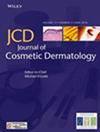Microfocused Ultrasound With Visualization Induces Remodeling of Collagen and Elastin Within the Skin
Abstract
Purpose
Microfocused ultrasound with real-time visualization (MFU-V) is often used for noninvasive skin lifting, by precisely targeting dermal and subcutaneous tissues to create thermal coagulation points (TCPs). These TCPs denature collagen and initiate a transient inflammatory response, ultimately attracting dermal fibroblasts and inducing efficient neocollagenesis and extracellular matrix (ECM) remodeling, yielding to MFU-V's desired skin-lifting effects. The current study investigates MFU-V's underlying mode of action based on the histological progression of TCPs in the skin, providing new insight into the technology's regenerative effect.
Methods
Following standard triple-depth MFU-V treatment, in vivo skin samples were assessed using histology and immunohistochemistry to evaluate TCPs, heat shock protein (HSP47), and elastin expression in fibroblasts.
Results
MFU-V treatment induced elongated, flame-like TCPs with denatured collagen at focal depths of 1.5, 3.0, and 4.5 mm within the skin—each corresponding to its respective transducer depth. Time-dependent progression of TCPs showed significantly increased scores of fibroblasts and mature collagen along with recruitment of HSP47-positive fibroblasts to TCP areas on Day 90. Collagen formation and later maturation were visualized. Newly synthesized elastin significantly increased in the TCP area on Day 90 compared to Day 14.
Conclusion
This work provides histological evidence of stimulation and regeneration of newly synthesized elastin fibers after TCP induction. MFU-V-generated TCPs triggered the body's own healing cascade of collagen denaturation, transient inflammation, proliferation, and tissue remodeling, resulting in attraction of HSP47-positive fibroblasts to the TCP sites, and new collagen and elastin fiber regeneration by fibroblasts. Besides the well-described neocollagenesis, this study demonstrates that MFU-V treatment induces elastin neogenesis that may result not only in skin lifting but also in improved skin elasticity, providing an overall regenerative effect.


 求助内容:
求助内容: 应助结果提醒方式:
应助结果提醒方式:


